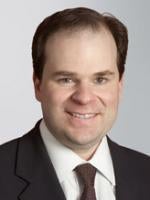An en banc decision from the Federal Circuit last week overruled a line of cases governing the interpretation of functional claim language, calling into question how courts, the PTO, and industry will treat such language in the future.
In Williamson v. Citrix Online, LLC, et al., No. 2013-1130 (Fed. Cir. June 16, 2015) (en banc as to Part II.C.1), the Federal Circuit struck down the “strong,” “not readily overcome” presumption that a claim element lacking the word “means” should not be interpreted as a means-plus-function element governed by § 112, para. 6 (now § 112(f)). In its place, the Court appeared to revert to its pre-2004 precedent which applied only a simple presumption. See, e.g., Personalized Media Communications, LLC v. International Trade Commission, 161 F.3d 696, 703–04 (Fed. Cir. 1998) (citing cases). The Court articulated the new standard as follows:
The standard is whether the words of the claim are understood by persons of ordinary skill in the art to have a sufficiently definite meaning as the name for structure. Greenberg, 91 F.3d at 1583. When a claim term lacks the word “means,” the presumption can be overcome and § 112, para. 6 will apply if the challenger demonstrates that the claim term fails to “recite sufficiently definite structure” or else recites “function without reciting sufficient structure for performing that function.” Watts, 232 F.3d at 880.
Slip op. at 16.
The Court cited several justifications for its holding. It asserted that the heightened presumption “is uncertain in meaning and application,” “has the inappropriate practical effect of placing a thumb on what should otherwise be a balanced analytical scale,” “has shifted the balance struck by Congress in passing § 112, para. 6,” and “has resulted in a proliferation of functional claiming untethered to § 112, para. 6 and free of the strictures set forth in the statute.” Slip op. at 15.
The ramifications of the decision may be significant. Once a claim element is classified as means-plus-function, § 112, para. 6 comes into play. That can change the claim construction analysis:
Construing a means-plus-function claim term is a two-step process. The court must first identify the claimed function. Noah Sys., Inc. v. Intuit Inc., 675 F.3d 1302, 1311 (Fed. Cir. 2012). Then, the court must determine what structure, if any, disclosed in the specification corresponds to the claimed function. Where there are multiple claimed functions, as we have here, the patentee must disclose adequate corresponding structure to perform all of the claimed functions. Id. at 1318–19. If the patentee fails to disclose adequate corresponding structure, the claim is indefinite. Id. at 1311–12.
Slip op. at 20. The decision could therefore affect the interpretation of many claims which had been drafted based on the old standard. It also suggests that claim drafters prospectively need to be careful to disclose sufficient structure in the claim language.
However, despite its sweeping language, the decision may ultimately be construed more narrowly based on its facts. For example, courts may apply the rule only when an element contains a generic term like “module” (or, as stated, in the dicta, “element,” “mechanism” or “device”), as opposed to “means,” in conjunction with a purely functional description of that term. The Federal Circuit referred to those kinds of terms as “nonce words.” Slip op. at 17, 18.
The decision also appears to shift more deference to the district court to decide these issues. By emphasizing that the question comes down to “whether the words of the claim are understood by persons of ordinary skill in the art to have a sufficiently definite meaning as the name for structure,” the Federal Circuit suggests that the issue is one of fact and subject to expert testimony. As a result, review of the determination by the district court would be for “clear error” under the Supreme Court’s recent decision in Teva Pharmaceuticals USA, Inc. v. Sandoz, Inc., No. 13-854, — U.S. — (Jan. 20, 2015), rather than de novo.
The bottom line is that while there now may be less certainty in the interpretation of functional claim elements, there is a higher likelihood that those determinations will be resolved at the district court level.
The case is Williamson v. Citrix Online, LLC, et al., No. 2013-1130 (Fed. Cir. June 16, 2015).


 />i
/>i

